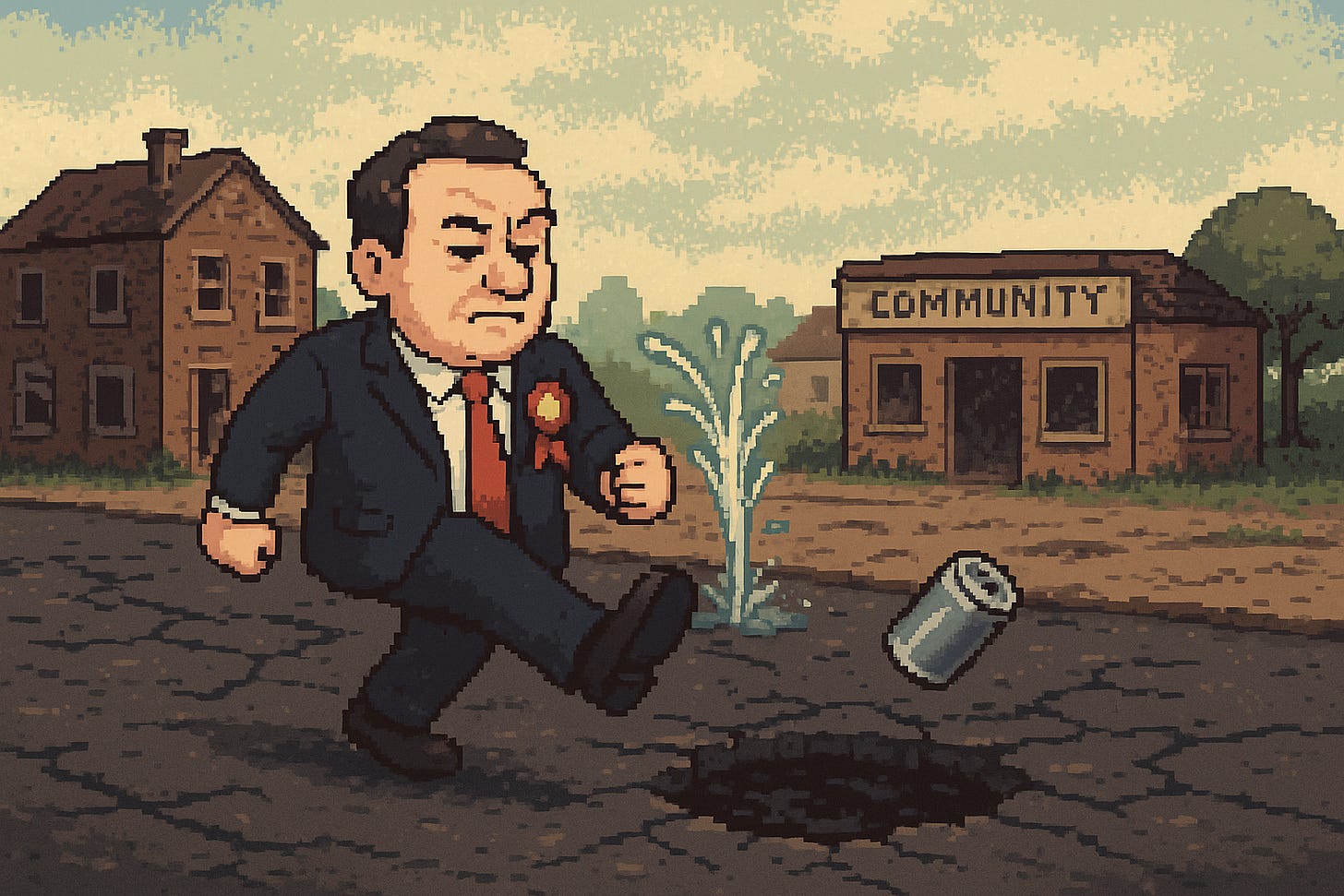Rates capping: lazy politics for lazy politicians
With Local Government Minister Simon Watts working on a rates capping policy to go to Cabinet before Christmas, it’s worth calling out the idea for what it is - lazy politics for lazy politicians. Few things make for an easier soundbite in politics than promising to cut or limit taxes. Much like those candidates claiming they can cut rate rises without bothering to specify exactly how they’ll pay for it, it gives current and would-be politicians the veneer of being fiscally responsible. But as soon as you scratch beneath the surface, rates capping gets exposed for being short-term populist nonsense that’ll lead to even worse long-term outcomes for our communities.
Rates are the main source of income for local government. They’re what pays for things like water, waste management, libraries, local roads, public transport, community facilities, civil defence, natural hazard management, parks and reserves, and more. It’s also no secret that recent years rates have been increasing far quicker than in previous decades, fuelled by things like the significant increases in the costs infrastructure and the skyrocketing bill for insurance, along with decades of under-funding assets to keep rates artificially low - creating a blow out now when pipes burst.
Similarly, councils are often their worst enemies. High profile stories like the multi-million dollar cost blowouts that have become synonymous with Wellington City Council projects like the Town Hall and sludge plant, or the mess that was the failed Reading Cinema deal, paint an ugly picture for the sector that detracts from the good work that most councils manage to do.
So a bit like asking a turkey whether it’ll vote for an early thanksgiving, it’s not surprising that the idea of capping rates has support when considered out of context.
The problem is questions like this don’t provide the context around whether that support continues if it’s going to lead to more potholes, more leaky pipes, dilapidated community facilities, and a general running down of council infrastructure and services. A bit like asking people if they want a tax cut versus asking people if they still want a tax cut if it’ll mean longer hospital waiting lists, worse student-to-teacher ratios, and state highways falling apart.
Of course, we don’t have to wonder about what the impact of rates capping is, because we can look across the Tasman and see how it plays out. Newsroom reported recently on how rates capping in Australia, while popular with ratepayers, is now seeing councils facing the squeeze and cutting services. The growing squeeze on Victorian councils was reinforced earlier in August when the Victorian Auditor-General noted that key sustainability indicators for their local government sector were declining as the growth in expenses were outpacing the allowed growth in income. It’s not much better across the border in New South Wales either with rates pegging being directly linked to a worsening infrastructure backlog in the state. The CTU’s Craig Renney has also written a good summary of how similar policies have played out in the United Kingdom and South Australia too.
Rates capping is the ultimate in kicking the can down the road. Simon Watts is unlikely to be a minister, let alone in Parliament, when the rot being sowed with this policy is reaped in years to come. He most certainly won’t be sitting around council tables when the hard conversations about closing local libraries, cutting back social housing, reducing pothole maintenance, or not replacing much-loved playgrounds come to a head as a result of increasing restricted finances.
He does, however, get to act as champion of hard-pressed households now while simultaneously selling out future ratepayers and communities in years to come.
It’s easy politics but terrible governance.
Today’s “saving” becomes tomorrow’s cost blowout.
It’s as if we haven’t learnt anything from the running down of our three waters infrastructure over the past three decades.
There are better ways to reduce the burden on rates as the primary funding mechanising for councils. An overhaul of local government funding and financing is long overdue. New funding tools such as revenue sharing from central government (given the continuing shifting of responsibility, congestion charging, and value capture taxes offer ways to shift some of the burden away from the dreaded rates bill.
The problem is these require actual work, the willingness of central government to give up control, and the expenditure of political capital. It requires a shred of honesty from politicians that tackling decades of under-investment to create thriving, liveable communities costs money. Pretending otherwise only sets us up for bigger problems down the track.
Instead it increasingly looks like we’ll be saddled with a lazy policy that hides the reality that this a choice between investing now or leaving our kids and grandkids to pick up the tab for our short-sightedness.


